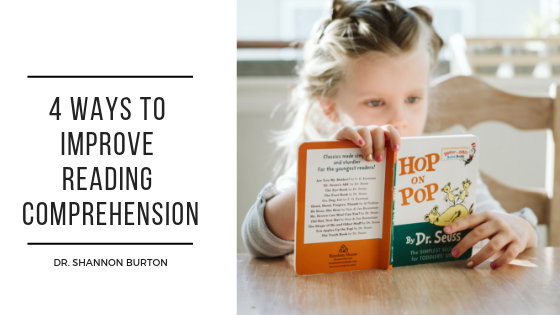As educational professionals, we’ve heard every excuse when it comes to reading, but the one that is constantly repeated is “I do not understand what I just read.” While this statement is usually uttered more by students in grades 7-12, it is important to help students build reading comprehension skills early on to help them achieve academic success later on in their educational career.
Reading comprehension problems do not mean that a student reads at a lower reading level; they just have problems understanding what they just read. Often textbooks in middle and high school are trying to cram as much information as possible into a chapter, and the density of the information may be at the expense of the student reading the chapter.
Students often struggle to determine the key ideas while other students have a hard time understanding the purpose of the chapter. To help students better comprehend what they are reading, try the following strategies.
Mental Activities
Reading comprehension is the result of many mental activities done by the reader. These skills are done automatically and simultaneously to understand what is being communicated by the text they are reading. These mental activities include:
- Predicting the meaning of a word
- Determining the purpose
- Connecting experiences to the text
- Visualizing the characters, settings, and events
- Reflecting on the meaning of the text
Reading comprehension done through a process that is interactive, strategic and adaptable for each reader at any level. Students who can use some of these mental activities will be able to understand better what they are reading and when they get to middle and high school, they will be able to quickly understand some of the harder subjects and denser material they are expected to read.
Read Aloud
While reading aloud is done a lot in elementary school, it is something that has also been proven to benefit middle and high schoolers. By reading aloud a teacher is not only modeling good reading behavior, but it allows for stops to check for a students understanding. It also allows a teacher to demonstrate their interactive elements and help students focus on the meaning of the text.
Ask Questions
Instead of rushing through a reading, students should be pausing and generating questions to understand further what they just read. These questions can be as simple as asking which just happened or digging a little deeper and discussing what they think the author means by a certain subject in the chapter. This can help students focus on the main idea while also increasing their engagement with the material they are reading.
Summarize
Students should be encouraged to stop reading and summarize what they’ve just read periodically. Creating a summary makes helps students to integrate the most important ideas from what they’ve read. This also helps them determine the important ideas from the irrelevant elements in the chapter. Adding this practice can also help make long passages more understandable.

